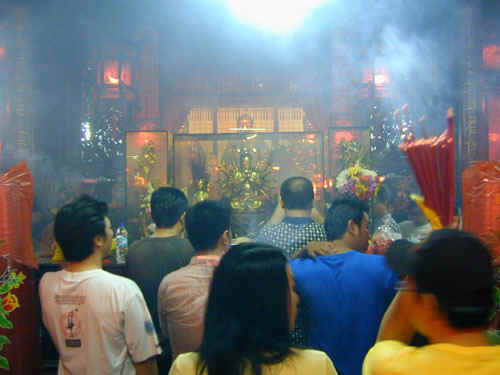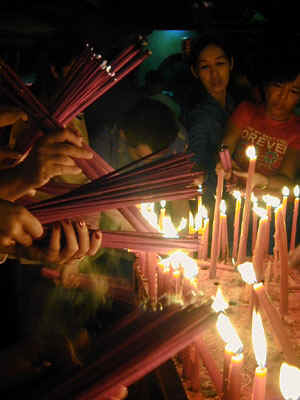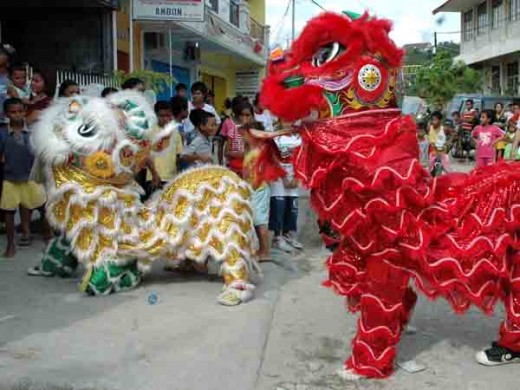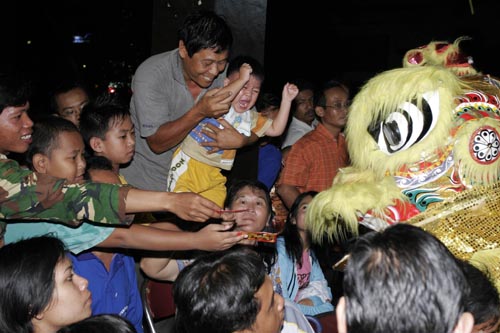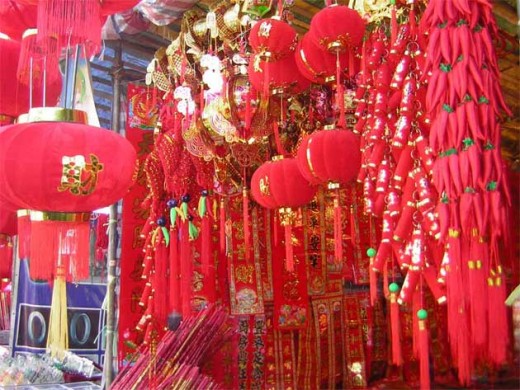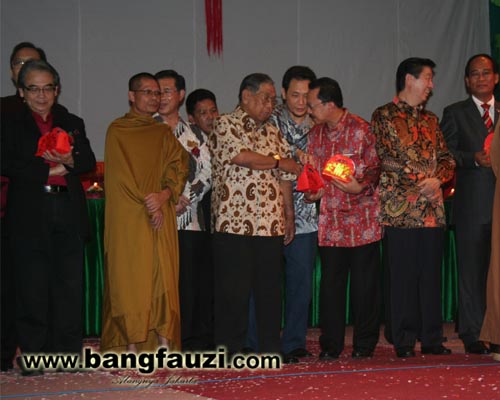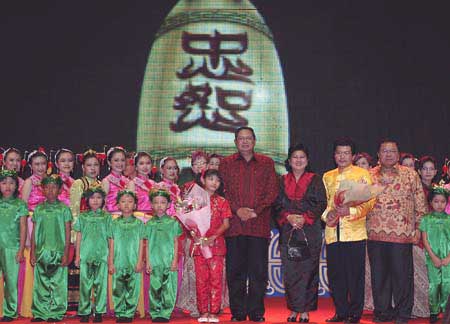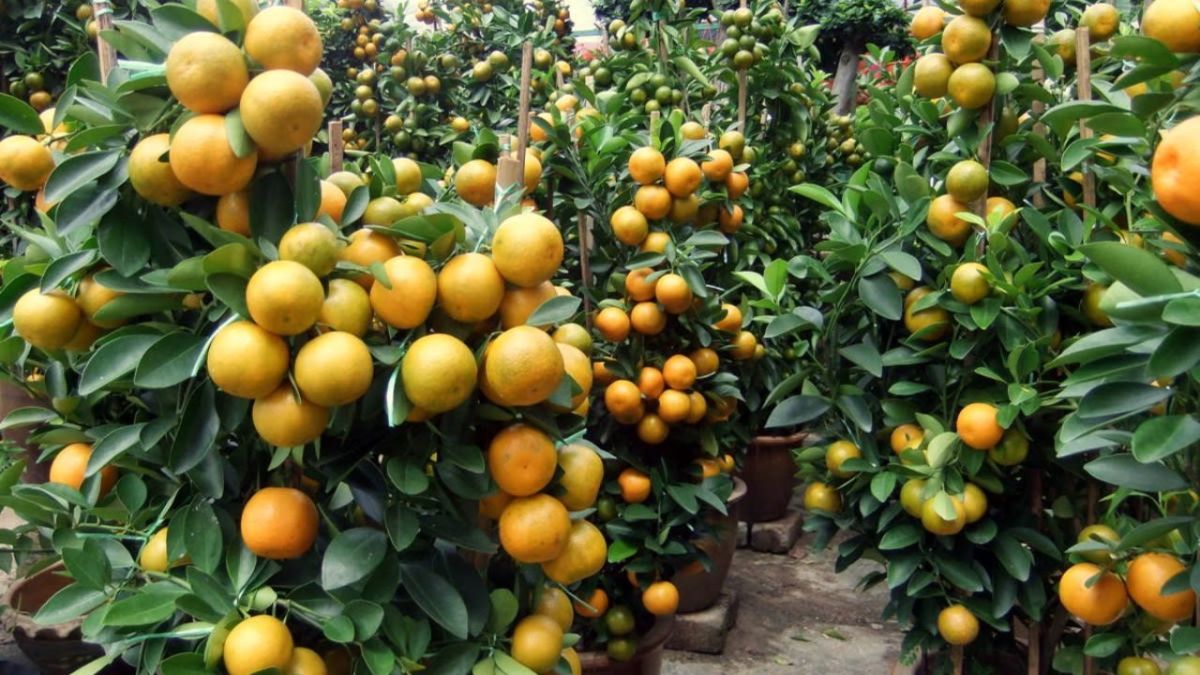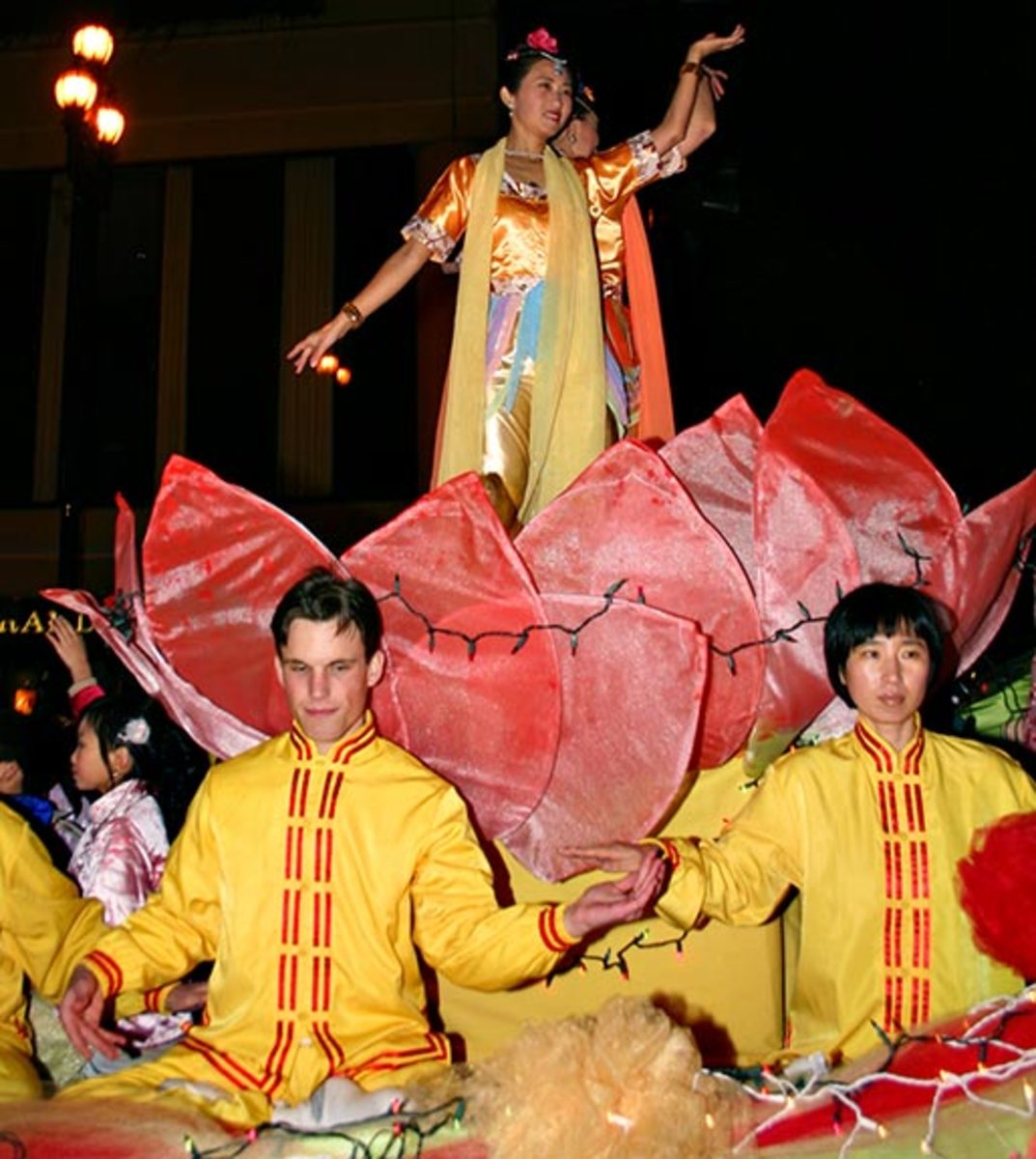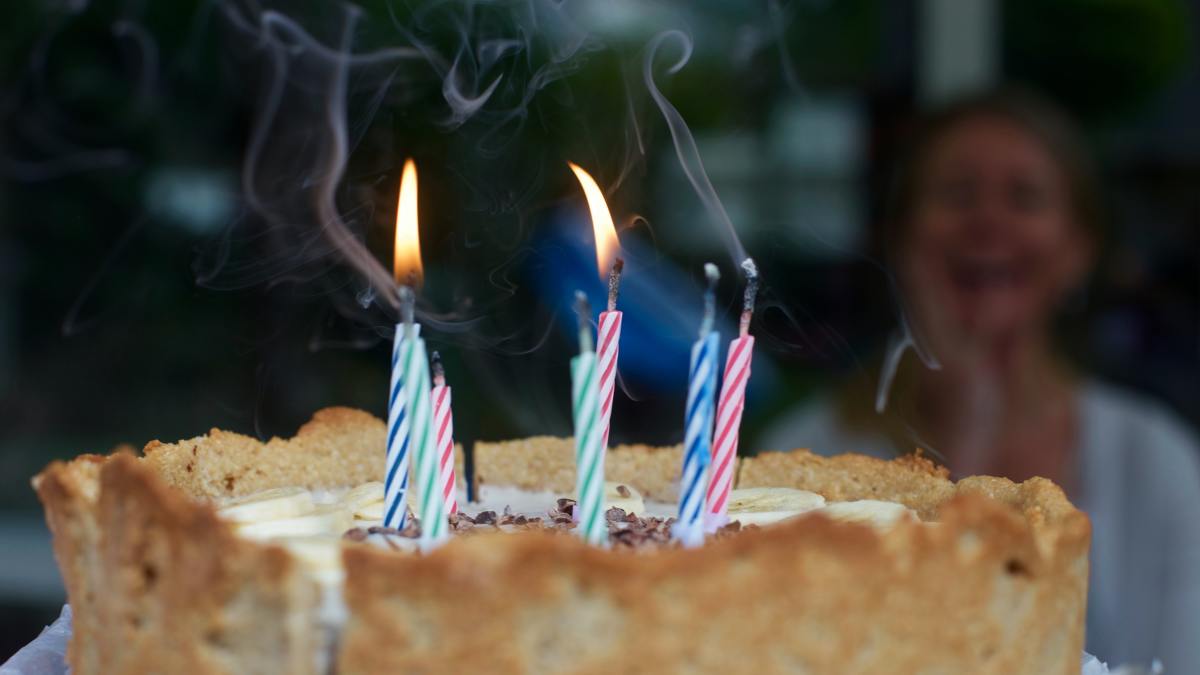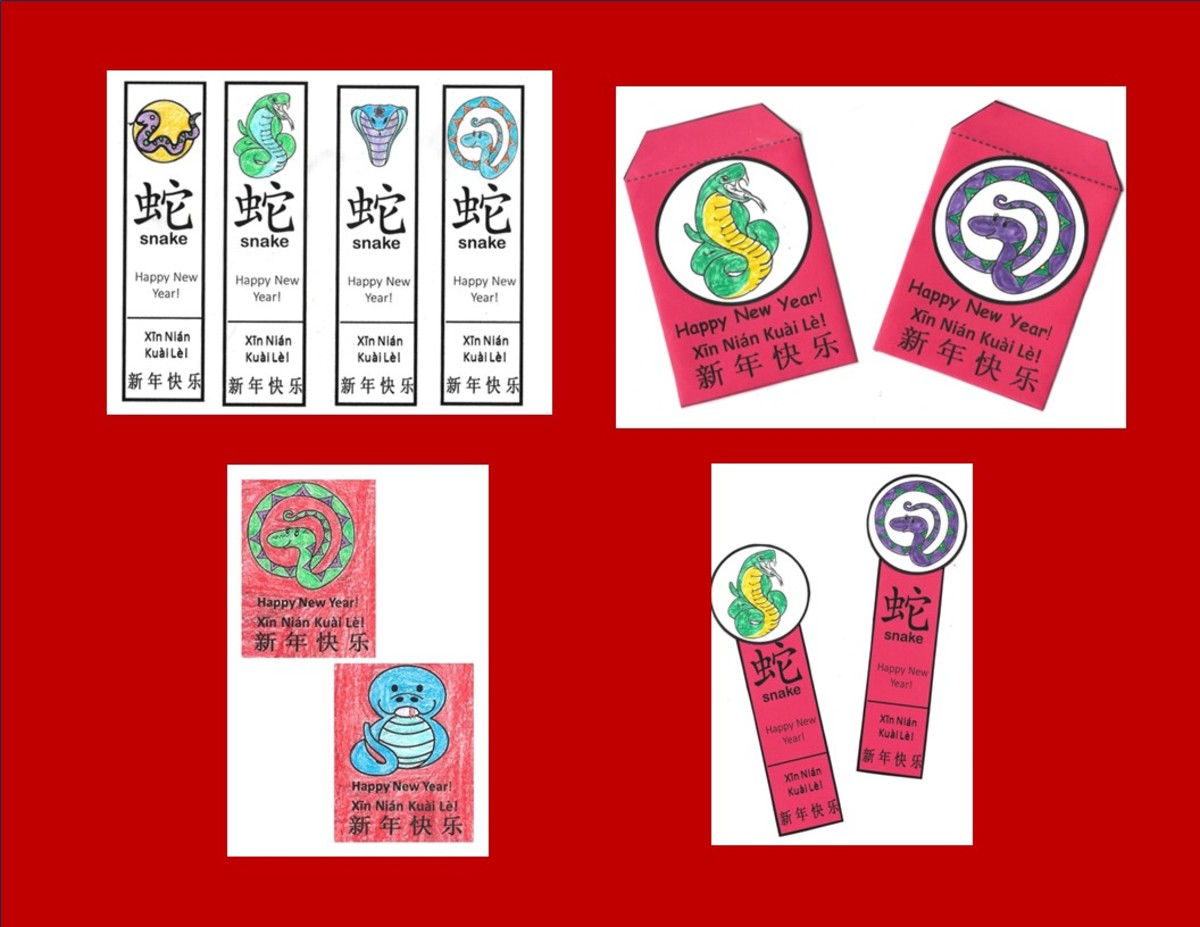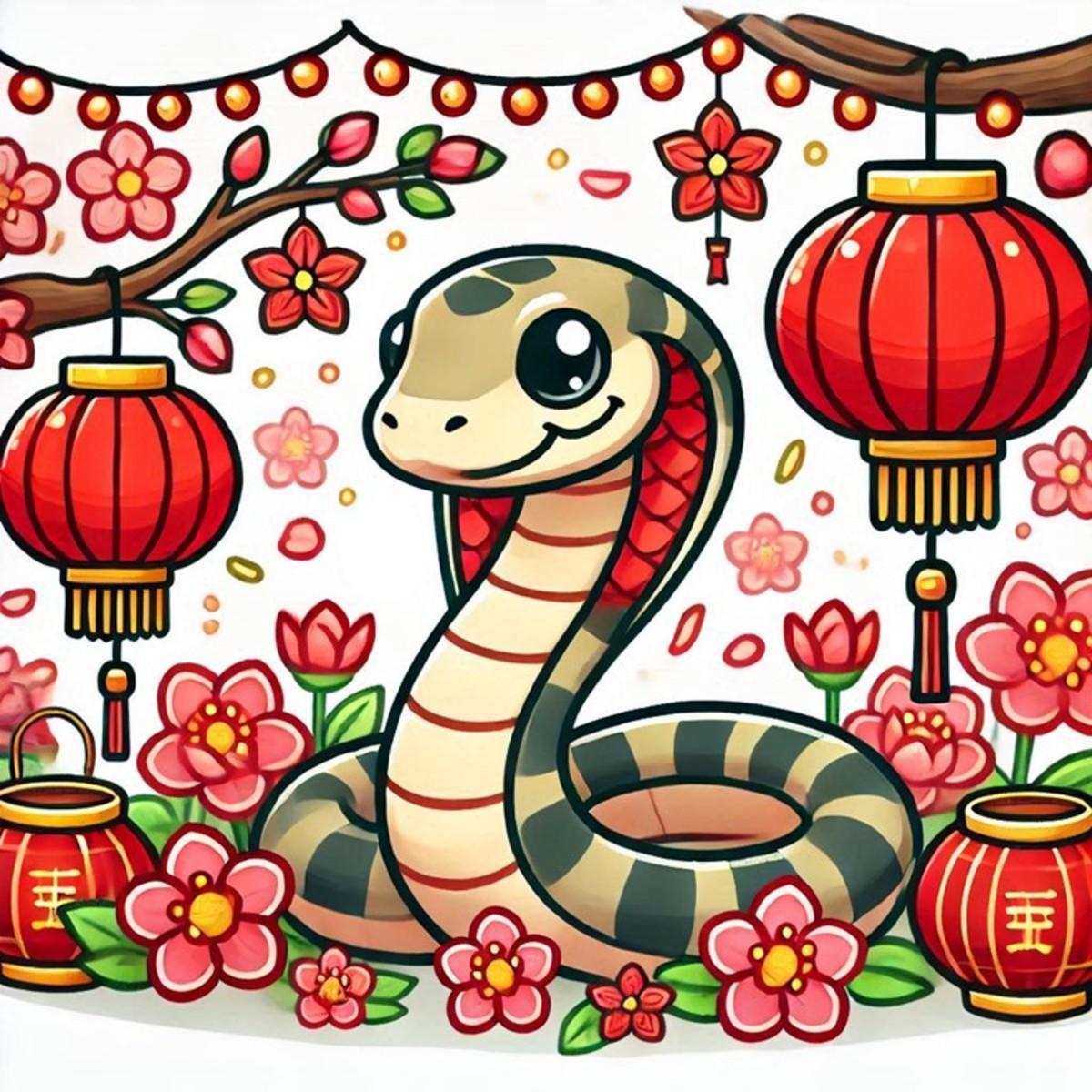- HubPages»
- Holidays and Celebrations»
- Asia Holidays»
- Chinese Holidays
Chinese New Year in Indonesia
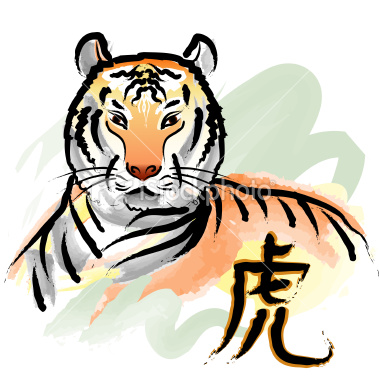
This year, the Chinese New Year will be celebrate it along with the Valentine's Day and many of youngsters in my country will be confuse, they are going to spend the day with their girlfriends or family haha, but I think it's not a big deal, as Indonesian Chinese, we usually have dinner together with our family in Chinese New Year's eve, that will be February 13, 2010. After that on February 14, we ususally pay a visit to our parents house and greet them, or visiting our elder's house, like grandma's, grandpa's, uncle's and etc. And in February 14, evening, the youngsters could have dinner with their girlfriends. I think.
The Chinese new year in my languange is called IMLEK
Chinese Cook Book
The history of IMLEK
The celebration of IMLEK or Chinese New Year begins on the first day of first month in Chinese calendar and will end with Cap Go Meh in date to fifteenth (at the time of full moon). Chinese New Year's eve is called Chuxi.
In Mainland China, the customs and traditions to celebrate the Chinese New Year is very diverse, but all of which will share many common themes such as the banquet dinner on New Year's Eve and triggering fireworks.
Celebrated in areas with large populations of ethnic Chinese, Chinese New Year is considered a major holiday for the Chinese and has had influence on the new year celebrations of its geographic neighbors, as well as cultures with whom the Chinese have had extensive interaction. These include Koreans (Seollal), Tibetans and Bhutanese (Losar), Mongolians (Tsagaan Sar), Vietnamese , and formerly the Japanese before 1873 (Oshogatsu). Outside of Mainland China, Hong Kong, Macau, and Taiwan, Chinese New Year is also celebrated in countries with significant Han Chinese populations, such as Singapore, Indonesia, Laos, Malaysia, the Philippines, and Thailand. In countries such as Australia, Canada and the United States, although Chinese New Year is not an official holiday, many ethnic Chinese hold large celebrations.
People will pour out their money to buy presents, decoration, material, food, and clothing. It is also the tradition that every family thoroughly cleans the house to sweep away any ill-fortune in hopes to make way for good incoming luck. Windows and doors will be decorated with red colour paper-cuts and couplets with popular themes of “happiness”, “wealth”, and “longevity”.
According to Wikipedia, The lunisolar Chinese calendar determines Chinese New Year dates. The calendar is also used in countries that have adopted or have been influenced by Han culture (notably the Koreans, Japanese and Vietnamese) and may have a common ancestry with the similar New Years festivals outside East Asia (such as Iran, and historically, the Bulgars lands).
In the Gregorian calendar, Chinese New Year falls on different dates each year, a date between January 21 and February 20. In the Chinese calendar, winter solstice must occur in the 11th month, which means that Chinese New Year usually falls on the second new moon after the winter solstice (rarely the third if an intercalary month intervenes). In traditional Chinese Culture, lichun is a solar term marking the start of spring, which occurs about February 4. The dates for Chinese New Year from 1996 to 2019 (in the Gregorian calendar) are at the left, along with the year's presiding animal zodiac and its earthly branch. The names of the earthly branches have no English counterparts and are not the Chinese translations of the animals. Alongside the 12-year cycle of the animal zodiac there is a 10-year cycle of heavenly stems. Each of the ten heavenly stems is associated with one of the five elements of Chinese astrology, namely: Wood, Fire, Earth, Metal, and Water. The elements are rotated every two years while a
yin and yang association alternates every year. The elements are thus distinguished: Yang Wood, Yin Wood, Yang Fire, Yin Fire, etc. These produce a combined cycle that repeats every 60 years. For example, the year of the Yang Fire Rat occurred in 1936 and in 1996, 60 years apart.
The Myths behind Chinese New Year
According to legend, long ago, Nian (年) is a man-eating giant from the mountains (or in a variety of other saga, from the bottom of the sea), which appears in late winter to eat the crops, livestock and even villagers. Untuk protect themselves, the villagers put food in front of their doors in the early years. It is believed that doing so, Nian would eat the food that has been prepared and they will not attack people or stealing cattle and harvest results. At one time, people saw that Nian fled in terror after a meeting with a small child wearing a red dress. Residents then believe that Nian was afraid with red colors, so that every time a new year is coming, the villagers would hang lanterns and red paper scrolls in the window and door. They also use fireworks to scare Nian. The customs for scaring the Nian then became the New Year celebration. Guo nian (traditional: 过年; ), which means "welcome the new year", which literally means "away Nian".
Since then, Nian never come back to the village. Nian eventually arrested by Laozu Hongjun, a Taoist priest and then became the vehicle of Honjun Laozu.
The Greetings
People say many kind of greetings in welcoming the New year or to greet one another. Like :
Gongxi facai
Kung hei fat choi (Cantonese)
Kiong Huat hi cai (Hokkien)
Kiong hi fat choi (Hakka Language)
Xin Nian Kuai Le (Mainland Chinese) means Happy New Year
IMLEK in Indonesia
Click thumbnail to view full-size




Team A part 1 (Barongsai di atas air by KONG HA HONG) or Dragon dance on the water by Kong Ha Hong
IMLEK in Indonesia
In Indonesia, the Chinese people in Indonesia can not celebrate the Chinese New Year during the year 1965-1998. That was the time when the late President Soeharto was reigned, and thank's to our great President the late President Abdurrahman Wahid (Gus Dur). He is the one that give a fresh air to the Chinese people in Indonesia. He allowed many of Chinese Indonesian to celebrate the Chinese new Year and during the reign of President Megawati Soekarputri, the Chinese New Year has been an official holiday. Since 2003, IMLEK is become an official national Holiday.
But, even if the celebration was restricted before, we still celebrate the New Year secretly :) Like hold a banquet dinner in New year's Eve and pay a visit to relatives, who will prohibit such activities, anyway.
Some Chinese Indonesian usually make kue ranjang, the traditional cake from sticky rice, which taste so sweet and sticky. We usually give the cake to others as good luck.
Kue Ranjang is made from sticky rice flour and brown sugar or caramelized sugar or melted sugar, without water or coconut milk. Only both ingredients and after mix them well, put it on a small place cover with banana leaves and then steam for about 18 hours! seriously, many Kue Ranjang sellers will steam their cakes for about 12 to 18 hours.
This kind of cake is really a must in Indonesian Chinese New Year's celebration. They used to make this cake for offering to the gods in the Shrine. Or in the altar in the main rooms. We usually stack the cakes in odd number like 3,5,7,..according to the wishes. Like if you stack the cake in 3, you hope that you will be prosper until your third generation, but usually people will stack the cakes in 7. They hope they will prosper until their 7th generation.
Chinese New Year in Indonesia
Click thumbnail to view full-size

The IMLEK Food
Well, the cuisine will vary according to our tradition and culture, but most of all we consume pig, fish, chicken or duck and many sea food dishes, We also consume sweets and many kind of fruits especially fruits which colors are gold, red, and orange. Like peach, mandarin oranges, lychees, etc.
Some of my family usually make or buy Kue Lapis or Layer cakes, which mean layer happiness, layer prosperity, layer good luck, and so on.
Kue Ranjang
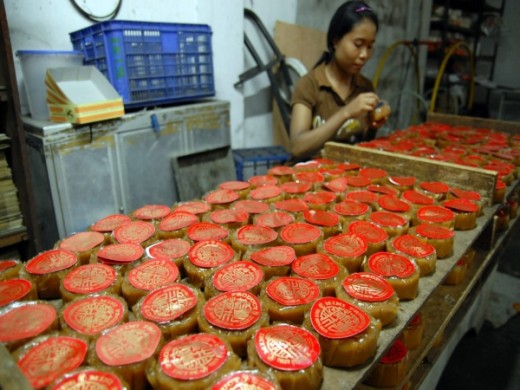
Angpao or Hung Pao or the Red Envelope
This is the tradition to give to our relative, most of from grandparents to their children and grandchildren some money for good luck. Or from Employer to employee, I used to had angpao from my boss in IMLEK time :) (big grin..)
But, in my tradition, there is some restriction in giving angpao, the one who has not married yet is restricted to give angpao.
The Celebration will end until the 15th day of the month, we call it Cap Go Meh in Fujian dialect. We usually make some dishes called Lontong Cap Go Meh, or a sweet glutinous rice ball brewed in a soup, usually contains coconut milk. eaten this day. Candles are lit outside houses as a way to guide wayward spirits home. This day is celebrated as the Lantern Festival, and families walk the street carrying lighted lanterns.
This day often marks the end of the Chinese New Year festivities.
I just did the banquet dinner and gather with family, relatives, or friends, not the activities in the Shrine because I am Christian. But this kind of celebration is great for our relationship with our ancestor and as a reminder the root where you're belong.
so, Happy Chinese New Year and may this year will be full of luck, happiness, and prosperity. God Bless You all !
Dragon dance by the little kid in Ciputra Mall

Related Hubs
- Chow Yun Fat as Confucius The Movie
Quote :"Forget injuries, never forget kindness" (Confucius)This year the Chinese people and Chinese society will enter the Lunar New Year on February 14, 2010 along with the St. Valentine's day. There will be... - Chung Ch'ui The Chinese Thanksgiving Festival
Thanksgiving is a special day. On that day, people usually give thank and praise God for His mercy and kindness throughout the year. People will give thank for God's blessing and presented their harvest with...



